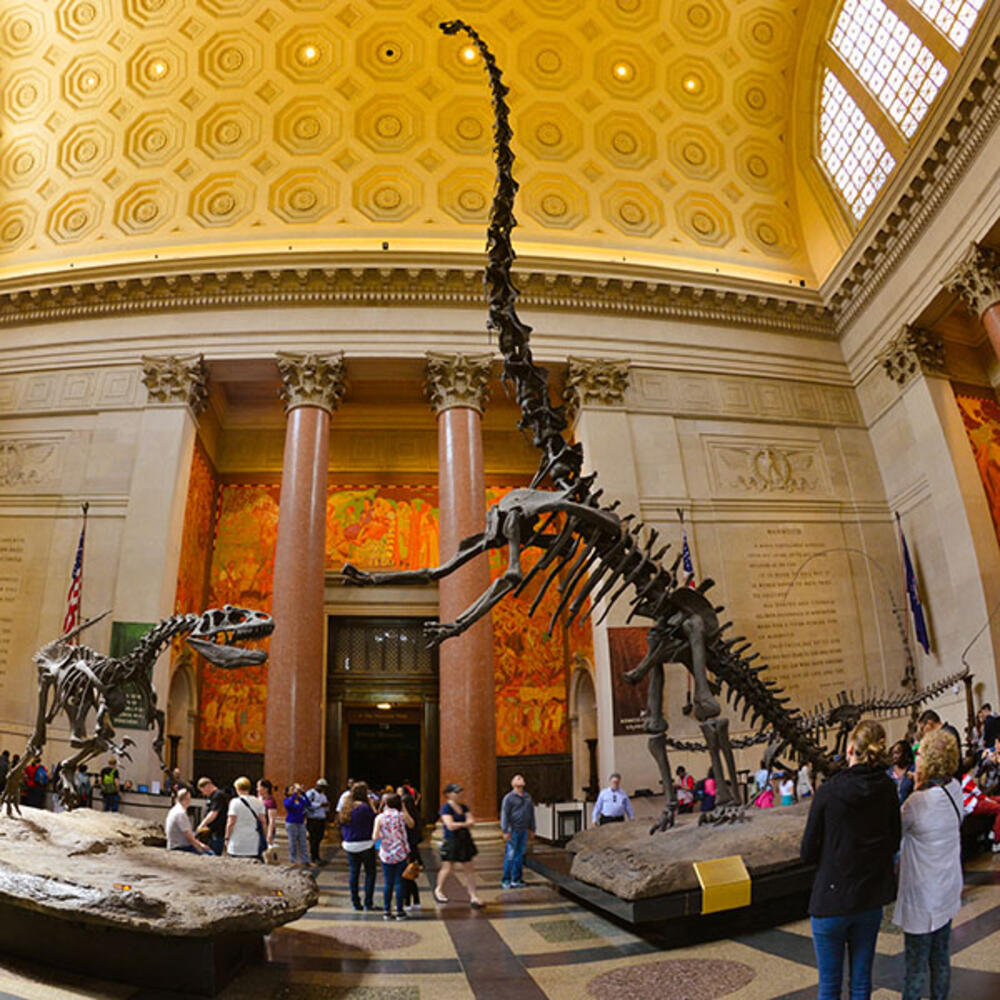Hall of African Peoples
The Hall of African Peoples explores Africa's cultural heritage from ancient Egypt to more modern times. The hall highlights lifestyles and customs—many of them disappearing—of peoples living in four environments: grasslands, deserts, forests, and river regions.
The religious, political, economic, and domestic aspects of life are richly illustrated with artifacts, including sculpted masks, religious icons, and tools for farming, fishing, iron-making, and more. Dioramas depict a variety of scenes, from the Berbers of the desert in North Africa to the Pokot people in East Africa. In a corridor at the end of the hall are artifacts of the great river valley civilizations of the Niger, Nile, Zambezi, and Congo.
The Hall of African Peoples features an extensive collection of musical instruments, including the lyre, zither, flute, trumpet, oboe, bells, horns, and drums. It also showcases dramatically displayed examples of ceremonial costumes, from the masses of banana fronds covering a Barawa “Dodo dancer” from Nigeria to the elaborate skin mask and symbolic painted leopard spots worn by the initiator of Bira boys of the Congo into manhood.
View more than 36,000 ethnographic objects from Africa in the online collection database.
This hall is included with any admission.
Enjoy free tickets for General Admission, special exhibitions, giant-screen movies, planetarium shows, and more!
 In a dramatic representation of an imagined prehistoric encounter between predator and prey, a Barosaurus rears up to protect its young from an attacking Allosaurus. The enormous Barosaurus is the world’s tallest freestanding dinosaur mount, and composed of casts of real bone, since fossils are too heavy to support in this way.
In a dramatic representation of an imagined prehistoric encounter between predator and prey, a Barosaurus rears up to protect its young from an attacking Allosaurus. The enormous Barosaurus is the world’s tallest freestanding dinosaur mount, and composed of casts of real bone, since fossils are too heavy to support in this way.